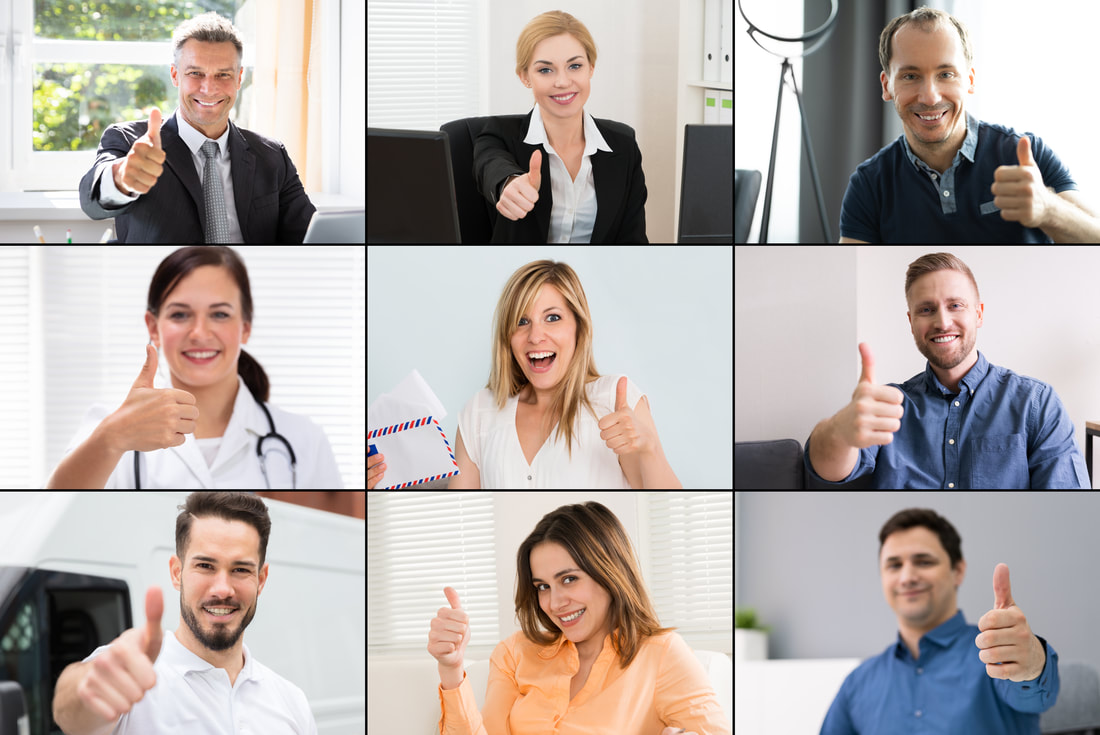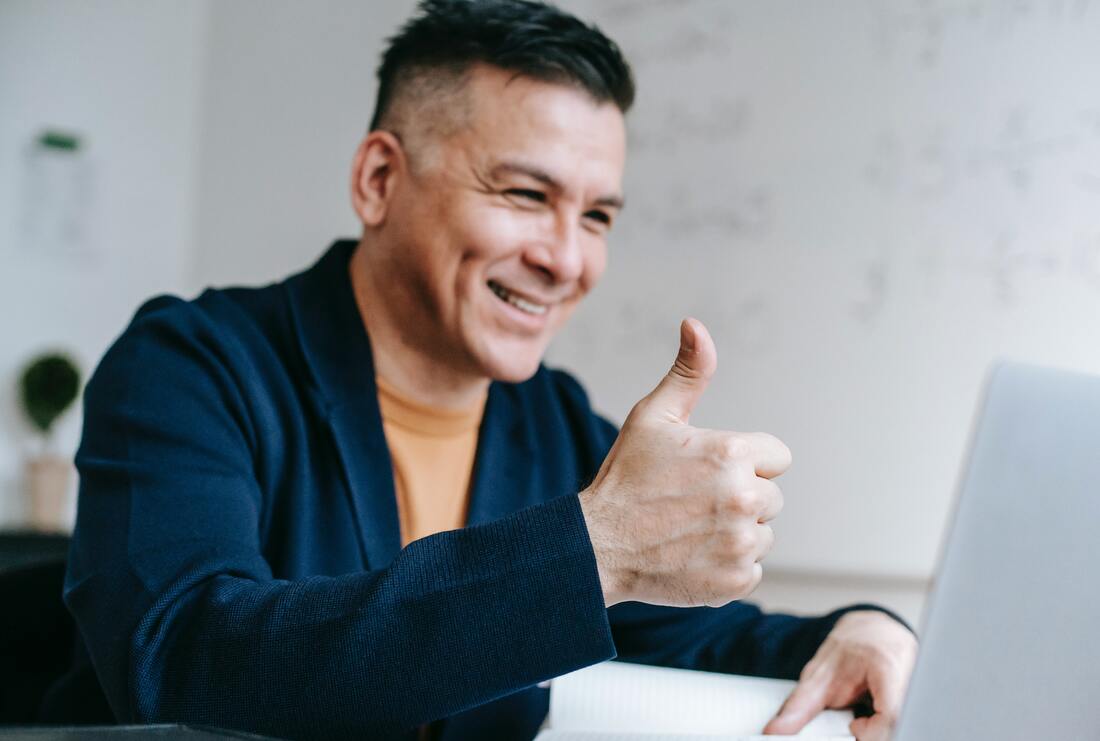|
Whether it excites us or paralyses us, change is an inevitable part of life and leadership. In today's fast-paced and dynamic business world, leaders must navigate change successfully to ensure that they and their organisations can adapt, grow, and thrive. In this article, we'll explore seven key strategies that you can use to develop the skills and mindset needed to navigate change successfully.
0 Comments
Feel like constant meetings are hanging you up? Set a regular meeting with yourself.
Meetings and more meetings. Just as you finish one call, you are dialing into the next one. Need to go for toilet break? Forget it -- there’s another meeting. This meeting situation was already insane before the pandemic, and it it has only gotten worse now with so many people working from home. There are dozens of articles about how to spend less time in meetings, how to reject meetings without looking bad, about 2/3 of our life being spent in meetings. All these articles trying to help us save ourselves. Yet many of us keep falling into the meeting trap. I have yet to find the magic formula for myself, however I do believe I am becoming more aware about how I am actually spending my time versus how I want to spend my time. Once upon a time, there was a man named Jack who struggled with communicating effectively with his wife, Jane. He would often get defensive and shut down during arguments, causing tension and frustration in their relationship.
One day, Jack decided he needed to make a change. He had heard about a technique called Neuro-Linguistic Programming (NLP), which could help him improve his communication skills and build stronger relationships. With the help of an NLP coach, Jack learned a variety of tools and techniques to improve his communication with Jane. Here are a few of the most effective techniques he learned: Limiting beliefs are negative thoughts and assumptions that hold us back from achieving our goals and reaching our full potential. They can be deeply ingrained and often go unnoticed, but they can have a significant impact on our lives if left unchecked. In this article, we'll explore some effective ways to manage limiting beliefs and overcome your inner critic.
Identify Your Limiting Beliefs The first step in managing limiting beliefs is to identify them. Start by paying attention to your inner dialogue and noticing any negative thoughts that come up. These thoughts might include things like "I'm not good enough" or "I'll never be able to do that." Once you've identified your limiting beliefs, write them down and examine them more closely. Ask yourself whether these beliefs are based on facts or whether they are simply assumptions. We all know the feeling—angry, upset, and sad because the world is making our life less than perfect. Our boss is mean, our friends aren’t there for us, other drivers cut us off in traffic, the store clerk was rude, we got a surprise bill from the electric company. On and on, we have so many miseries that are not our fault.
Susan wrote in Feel the Fear and Do It Anyway, “We all have a tendency to look around for someone to blame if things are not working out to our liking.” Blaming others of things outside our control means we are not taking responsibility for ourselves. Blame makes us into an injured party who has no control, who lets the world beat them down, who doesn’t respect themselves, who lives in misery. In Chapter 4, “Whether You Want It or Not…It’s Yours,” Susan talks a lot about taking responsibility for our own lives. As adults, we often feel that we are burdened with lots of responsibility. But responsibility for your day-to-day living is far different than taking responsibility for how you react to your day-to-day living. Here’s what I’ve done:
I blocked my calendar for a 2-hour meeting with myself one Friday morning a month. At this meeting with myself, I reflect on my activities. This has helped me to become more focused, improve as a professional and be more aware of how I use my time. One Friday morning per month, I ask myself questions like these:
To answer these questions, I look through my calendar for the past month and reflect on what I can do to improve my performance. If you try this for yourself, you might notice that you have had a more assertive/challenging style of leadership. Or you may observe that your primary emotions were frustration and anger, and that your energy tank tended to be half empty all the time. Awareness of these issues could be the trigger you need to figure out how to change your behaviour in order to better achieve a desired result. Without realising it, we often operate on autopilot. Setting some time apart to reflect, effectively turns off autopilot and allows us to take control back again. So, why not try it? Set a monthly 1:1 with yourself in your calendar, grab a Nespresso cup of coffee, put on some music, relax and enjoy answering some questions about you, for you. Hiring a candidate can feel like reaching the finish line of a journey. After weeks or months of recruiting efforts, you finally found the right fit. But it’s not – it’s actually the beginning of a crucial stage of your hiring process: onboarding.
“It is an incredibly vital stage of the hiring process because employees are acclimated to their position, the company’s philosophies, and what the organization has to offer during onboarding,” says Jamie Olson, Head of People & Culture at Continu, a learning amplification platform for teams. “It also increases motivation, resulting in employees who are dedicated to the company’s success, and promotes the retention of new recruits by making them feel like a part of the team.” Your onboarding process is the first impression. It can make or break the long-term chances of success of your new team member – it’s when expectations are set and important information is passed along. Olson broke down everything you need to know about how to effectively welcome a new employee to the team. Learn more in the checklist and onboarding tips below. The ultimate onboarding checklist First of all, it’s important not to “wing it.” Onboarding doesn’t consist of greeting your new report and making a few introductions before leaving them on their own. You’ll need to create a streamlined process that is consistent every time you hire someone new. Here is a checklist. Opinion: Being less or more confident of the choice that has been made cannot affect the outcome. It can, however, influence future ones. I’VE ALWAYS BEEN an indecisive person. What to wear, which menu item to pick, when to do house chores, always thinking through scenarios before committing to even the most trivial of choices.
If this sounds like you, you’re certainly not unusual: Many people struggle with these issues. Our new research may not be able to help you choose which restaurant to go to, but it might reassure you. Decisive people may be more confident in the choices they make, but they are no better at making decisions than the rest of us. Sometimes it’s necessary to provide feedback, but it can be a delicate situation.
You’ve probably heard that people don’t quit jobs; they quit bosses. In today’s hiring market with record numbers of employees resigning, that may or may not always be true. But bad bosses can definitely be a factor for employees who decide to leave. “I think that a lot of people are saying, ‘Hey, I’ve been putting up with this manager for way too long. All of a sudden, we are in an incredible job market, and I’m going to take my chances and test it out and see if there is a better fit and a better opportunity available,'” says Stephanie Lovell, head of marketing for Hirect, a hiring app for tech startup founders. If you’re considering leaving your job because of your manager, consider this: What if your boss is a fixer upper? A diamond in the rough? Someone who just needs some input on how to do a better job? Giving your boss feedback may not only be a way to correct your frustration; it can be helpful for your boss, too. It can also be tricky. But instead of diving into a list of grievances, consider these steps: If You Can’t Answer “Yes” to These 8 Questions, Your Manager Needs To Do More To Support Your Career15/5/2022 Managers expect a lot from their employees, but let’s turn it around: what should employees be expecting from their managers?
Whoever manages a team doesn’t just manage their to-do list, targets and professional roles — at the end of the day, they’re dealing with people. And we all come with our own list of demands and needs, both inside and out of work. It’s time employees were put first. Not out of greed or to be spoiled, but to become more efficient, productive, engaged employees. Here’s how your manager should be supporting your lifestyle and helping you achieve your career goals. 1. Are they offering valuable wellbeing perks? A lot of times, managers get well-being in the workplace all wrong. Let’s set one thing straight: well-being can never be managed or established in only one place. If you want your employees to feel great at work, take care of them outside of work. Let’s break down what well-being is all about, first. A daily practice to realize the counterintuitive truth that when you slow down, you have more time. Most people, most of the time, move more quickly than they need to. I’m not talking about running for the bus—I mean operating with an internal imperative, an over-revved engine, an agitated nervous system and an overactive mind that makes you drum your fingers while you wait for your coffee order, fidget with your phone when there is nothing you need from it, walk as if rushing because, well, just because it’s your habit. Moving quickly, while stressful, gives us a sense of purpose, as if pace and posture are saying: “Look how busy and important I am; I have no time to hang around.” “I have so much going on,” we boast to each other, as if we would prefer it to be otherwise. We tell each other: “I really need some space,” but as soon as you have some free time, do you just sit there, surrendering to the void? No, you fill it up with doing something!
You have the power to unlock new levels of creativity you couldn’t even fathom before. Statistics show that over 20 percent of newly established businesses in the U.S. close within the first two years. That equates to around 155,000 companies, which is quite an astounding number. If you do not want your startup to be a part of these statistics, it may be time to start thinking outside the box.
One way to ignite the creative spark within you is to create mind maps. Online mind mapping is a tool that is readily available and can increase innovation. Entrepreneurial creativity is now a necessity in this changing business landscape. To survive, business people need to be adaptable and innovative. Let’s examine how mind maps can act as the key to unlocking an entrepreneur’s creative side. Develop Creative Habits People think creativity is something you are born with. However, that is not always true. You did it. You made it out — hopefully with some shred of sanity and sense of personal self-worth. But even if those things feel unrecoverable, they aren’t. You can get them back.
Maybe you’ve moved on to greener pastures. If that’s the case, well done. You’ve taken an important step towards preserving (or gaining back) your emotional and physical health. Maybe, although less likely, your boss either moved on or was fired. Most of the time, these situations don’t fix themselves, as for some reason senior leadership would rather keep a single toxic boss employed than the multiple high-quality employees who leave because of them. In either case, there’s a residual emotional and physical toll that lasts well beyond the end of the boss-employee relationship. I know; I’ve been there. In the span of just two years of reporting to a toxic boss, I went from being a high-performing, high-potential engineering leader to nearly leaving the company I’d spent 15 years at because of one single person. My boss. That’s how badly I needed to get away from her. Learn to become a doer who can think clearly What you do changes the trajectory of your life — not what you think.
Don’t get me wrong; smart thinking influences our actions more than we think. But to make real change that gets you close to what you want, you have to take become a doer. Aristotle was right, “For the things we have to learn before we can do them, we learn by doing them.” The only way to close the gap between where you are now and what you want for your future self is by taking the right action consistently. Choosing to take action is a choice that comes with responsibility, sacrifice and a lot of grit. Nobody can practically push to do anything more than yourself. Instead of convincing yourself that you can’t do something, say yes to the right opportunities, habits, routines and behaviours that guarantee real progress or a much better life. I wonder how many words have actually been written about communication. Suffice it to say, there have been a great many. I suppose it is because we haven’t cracked it yet; this ability to convey messages so that what we say is heard in the way we mean it, and conversely, what we hear is received in the way it was meant. Indeed, the road to clarity always seems to be under construction.
Even if we try to simplify our communication processes, barriers come up that can sabotage the message and render it ineffective by the time it gets to those who must act on it. There are a lot of reasons for this. Here are four that come to mind: Cultural barriers There are many factors that make up what we refer to as “culture” but to me, cultural difference is about attitudes and beliefs that come from our personal environment and experience. As such, two people could get the same message but interpret it in two entirely different ways simply because their frames of reference and language differ. Small things that tell you a lot about someone. In this article, we will talk about how to recognize subtly toxic people.
No one wants to waste time and energy around people who consistently behave in unhealthy ways and add negativity to our lives. Yet, many of us sometimes get stuck in toxic relationships that have a negative impact on our mental health and even on our self-confidence. The problem is some people may seem friendly, charming, respectful, and even emotionally mature, when we don’t know them enough. Some of their behaviors may seem inoffensive at first, while the reality is they are not, and they can actually damage relationships in the long-term. This is why it’s essential to learn to recognize these unhealthy habits. What follows are four behaviors of subtly toxic people: Worried About Achieving Your Goals? Take Charge of the Stress in the Moment to Stay on Track29/7/2021 You have a goal, but are worried you will not achieve it. So many issues are popping up that need dealing with, obstacles and other unexpected ‘stuff’ keeps interfering with your daily plan and / or overall daily structure. Stress kicks in, which means focusing is harder and so less is achieved … sound familiar?
All of these thoughts and mind chatter do not have to result in your getting off track or losing sight of your goal. The trick is to take charge of your thinking and push the ‘reset’ button. By this I mean, ‘reset’ the moment, not the direction you are heading or the goal you intend to achieve. Resetting the moment means handling whatever is causing you stress. Stress is an emotional issue and will not vanish with the flick of a switch in your brain. Unless, of course, you already.... Change is not easy, nor simple. If you have been told you should change, but are not really convinced that this is true, you are more likely to fail at completing the process. Personally, I recognize the process to be complete when I no longer remember ‘what I was like before.’ Someone still in denial about the need to change will not get very far.
Chances are there will always be excuses in the form of: I do not have the time for this right now, I am busy, I already know how to…, it is not my fault, you do not understand, ‘a leopard cannot change its spots,’ I am too old, etc. Change can only really happen if you are ready to take action. Research shows that 90% of the strategies designed for change assume people are ready to take action. In reality, only 20% of the people already involved in some process of change are actually ready to take action. This helps explain why so many attempts to keep New Year's resolutions, lose weight, change behaviours, etc, are doomed to failure. It is most helpful and supportive and will increase your chances of successfully completing a Feel like constant meetings are hanging you up? Set a regular meeting with yourself.
Meetings and more meetings. Just as you finish one call, you are dialing into the next one. Need to go for toilet break? Forget it -- there’s another meeting. This meeting situation was already insane before the pandemic, and it it has only gotten worse now with so many people working from home. There are dozens of articles about how to spend less time in meetings, how to reject meetings without looking bad, about 2/3 of our life being spent in meetings. All these articles trying to help us save ourselves. Yet many of us keep falling into the meeting trap. I have yet to find the magic formula for myself, however I do believe I am becoming more aware about how I am actually spending my time versus how I want to spend my time. Miscommunication and mistrust are common when work is over email, text, and video. We need digital body language to foster understanding.
As the youngest child in an immigrant Indian family, I picked up basic English grammar fairly easily. But while English may have felt natural, I still lacked a lot of the contextual cues that came naturally to my American-born peers. I remember once inviting a school friend to join my family for dinner at a local restaurant. At one point, my friend whispered to me that the waiters thought our party was “rude.” It wasn’t what anyone said; it was our tone and our cadence. You see, in Indian English, when people ask for something, they often use an intonation with a falling cadence so it comes off sounding like a statement rather than a question. Most Americans are accustomed to requests that end in a rising cadence. At that moment, I knew exactly what my friend meant: Without realizing it, everyone in my family sounded like we were ordering around the staff. Photo credit: Pexel Why you don’t learn from failure
How many times have you heard that failure is a “teachable moment?” That you learn more from failure than success? In a 2017 commencement speech, U.S. Supreme Court Chief Justice John Roberts actually wished the graduating class “bad luck,” so they’d have something to learn from. Yet my colleague Ayelet Fishbach and I find that failure has the opposite effect: It thwarts learning. In a recent study, we presented over 300 telemarketers with a quiz. The telemarketers answered 10 questions on customer service, each with two possible responses (i.e., “How many dollars do U.S. companies spend on customer service each year?” The answer choices: 60 billion or 90 billion). Some considerations about your remote working environment by Paolo Cuomo.
Just over 9,000 days ago I entered 37 Fitzroy Square, London and sat at an office desk for the first time. 380 days ago I entered the iconic Cheesegrater building and sat at an office desk for the last time. I hope it won’t be the very last, but it’s clear I won’t be back until mid-2021 at the soonest. Ignoring a project I did many years ago with night-shift supermarket workers, this is the longest by far I’ve not worked in an office. When the UK and much of the rest of the world went into “lockdown” back in March/April 2020, it all seemed rather temporary. Of the many millions conducting our work interactions via email and Zoom, most took a short-term approach to our workspace — sometimes through limited choice, sometimes through natural inertia. Sure, a new mouse or a monitor, but still just stuck in the same corner or on the dining room table. As the work from home extended, we entered the summer months with the siren song of working outside or, as in my case, spending large parts of the day on calls while walking. Thus no real reason to adjust. Now here we are a year later. Supporting employees who initially come across as timid can help these people feel comfortable at work and deliver great results for the company.
Experienced managers will have overseen teams comprising all sorts of characters and personality types, from the boldest extroverts to the quietest introverts. Commonly accepted ideas in the world of work, and society as a whole, suggest the people who speak loudest and take control of social situations are the most capable and able to deliver results. But that isn’t necessarily true. Natural introverts often have many qualities that can prove particularly valuable for businesses, so there’s a lot to be gained from supporting employees who initially come across as shy and timid. Here are some of the ways you can do that... One of the hardest jobs a leader has is giving corrective feedback to someone whose behavior is difficult, aka "the difficult employee." This person's behavior is adversely affecting the team, not just you. You've tried all the soft approaches like ignoring the behavior, making a joke about it, dropping hints -- and still he persists.
Finally the time has come to deal with this head on. You need to give him straight feedback. Most people would rather scratch their fingernails down a chalkboard than do that, but, hey, you are the leader, so it's your job. You bravely say yes, but wonder privately if, by talking to him straight, you're going to make things even worse. What if you could give this feedback to him in a way that would solve the problem and even enhance your working relationship with him? What if he would actually thank you at the end of the conversation, grateful that you cared enough to talk to him about it? This is possible! Here are 5 steps to follow in order to to make the biggest difference possible. You might consider experimenting with these steps also when the stakes are lower, BEFORE an employee get labeled as "difficult." 1. Prepare for the conversation ahead of time.
Just as life is constantly changing, the brain is constantly changing. It is through repetition that thinking patterns and consequently behaviour patterns, can be shifted, tweaked, changed or completely replaced with more positive empowering ones. Through repetition the brain rewires itself.
Science has proven the brain can rewire itself. This is fantastic news especially for anybody wishing to improve the quality of their life and engaging the support of a coach for this 'change' process. Making, and more importantly sustaining, any changes in thinking or in behaviour patterns, would be very difficult, if not impossible, without this scientific truth. Knowing this offers coaching clients not only motivation but also confidence to continue on the path to 'change', which sometimes can be a difficult one. |

























 RSS Feed
RSS Feed